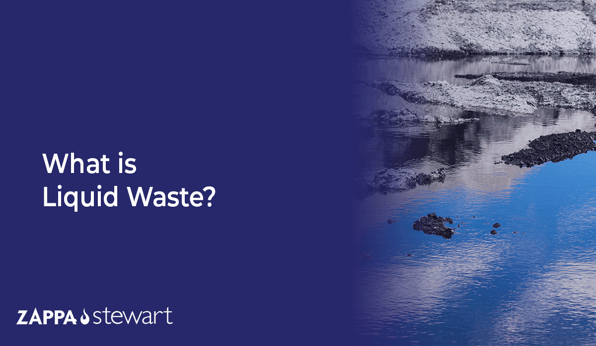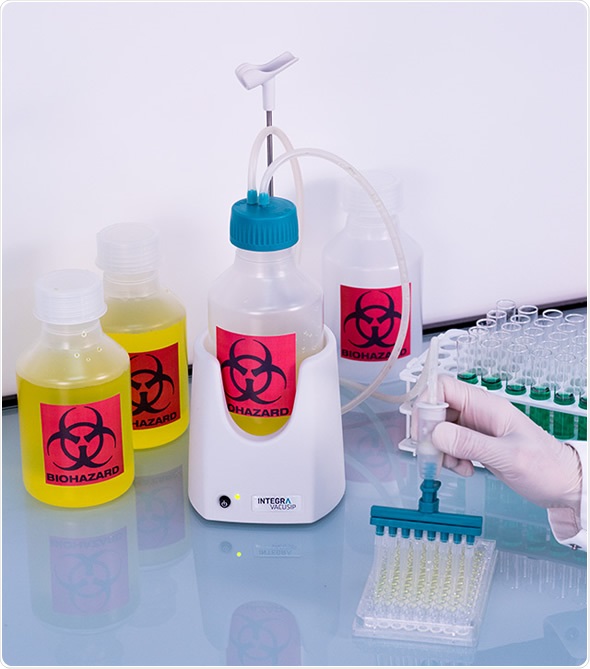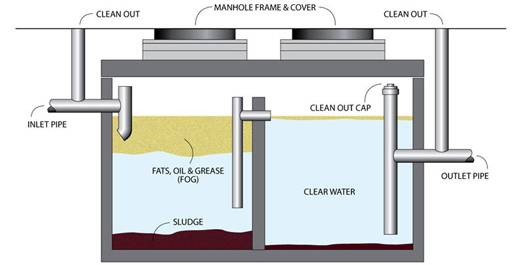Leading Industrial Wastewater Treatment Solutions: Making Sure Compliance and Effectiveness
Leading Industrial Wastewater Treatment Solutions: Making Sure Compliance and Effectiveness
Blog Article
Just How Liquid Garbage Disposal Functions: A Thorough Introduction of Methods and Technologies Employed

Overview of Liquid Waste Types
The complexity of fluid waste types requires a complete understanding of their features and effects for disposal. Liquid waste can extensively be classified right into a number of types, consisting of commercial, metropolitan, farming, and harmful waste. Each classification displays distinctive residential or commercial properties, needing particular management strategies to alleviate ecological and health risks.
Industrial fluid waste stems from producing procedures and commonly consists of a series of contaminants, such as hefty metals, solvents, and organic compounds. Metropolitan liquid waste, primarily consisting of wastewater from homes and commercial facilities, consists of raw material, nutrients, and microorganisms (industrial wastewater treatment). Agricultural fluid waste, consisting of runoff from ranches, may contain fertilizers, pesticides, and pet waste, positioning risks to water top quality and environments
Unsafe fluid waste is characterized by its poisoning, reactivity, or possible to cause injury. This group consists of materials like acids, bases, and particular chemicals that require stringent handling and disposal methods. Understanding these varied fluid waste kinds is important for creating reliable disposal methods and guaranteeing compliance with environmental policies. Appropriate category and characterization are crucial for applying ideal therapy techniques and reducing the adverse influences on public wellness and the atmosphere.
Physical Therapy Techniques

Screening is the first action, where larger fragments and debris are eliminated from the fluid waste making use of displays or grates. This procedure safeguards downstream devices from damages and ensures smoother operation. Complying with testing, sedimentation utilizes gravitational force to separate solids from liquids. In sedimentation containers, much heavier bits resolve at the bottom, forming a sludge layer, while the cleared up fluid can be additional treated.
Purification is an additional important method that entails passing the fluid with porous materials, such as sand or membranes, to catch smaller sized bits. This action boosts the quality of the fluid, making it appropriate for succeeding treatment processes.

Chemical Treatment Strategies
Chemical treatment techniques are important for efficiently taking care of fluid waste, particularly in dealing with dissolved and colloidal impurities that physical approaches might not properly eliminate. These techniques use numerous chemical representatives to counteract, speed up, or transform hazardous compounds right into less hazardous kinds.
One common method is coagulation and flocculation, where chemicals such as alum or ferric chloride are added to promote the gathering of suspended bits. This procedure improves sedimentation, allowing for simpler elimination of the resulting sludge. Additionally, oxidation procedures, employing representatives like chlorine or ozone, are employed to break down intricate organic compounds and virus, rendering the waste much safer for discharge or more therapy.
Neutralization is another critical technique, which adjusts the pH of acidic or alkaline waste streams to neutral levels, preventing prospective injury to downstream systems and the environment. Furthermore, advanced oxidation procedures (AOPs) make use of mixes of oxidants and ultraviolet light to degrade consistent pollutants, accomplishing a greater degree of therapy effectiveness.
Organic Therapy Procedures
Organic treatment procedures play a crucial duty in the monitoring of liquid waste by making use of microorganisms to disintegrate organic matter and reduce contaminant degrees. These processes can be extensively categorized right into anaerobic and cardio treatments, each utilizing particular microbial communities to achieve effective waste degradation.
Aerobic treatment involves making use of oxygen to facilitate the breakdown of organic products image source by microorganisms. This procedure is commonly executed in turned on sludge systems, where aeration tanks provide a conducive atmosphere for microbial development, leading to the oxidation of natural toxins. The resultant biomass can be separated from treated effluent via sedimentation.
On the other hand, anaerobic treatment takes place in the absence of oxygen, depending on various microorganisms to break down organic matter. This technique is specifically helpful for high-strength waste, as it generates biogas, a sustainable power source, while lowering sludge manufacturing. Technologies such as anaerobic digesters are frequently employed in commercial and municipal applications.
Both aerobic and anaerobic biological therapies not just lessen the ecological effect of liquid waste however additionally assist in source recovery, making them vital components of sustainable waste administration strategies. Their adaptability, effectiveness, and efficiency sustain their prevalent implementation throughout different fields.
Emerging Technologies in Disposal
Ingenious techniques to fluid garbage disposal are rapidly progressing, driven by advancements in innovation and an enhancing focus on sustainability. Among these arising innovations, membrane bioreactors (MBRs) have obtained grip for their capability to incorporate organic therapy with membrane purification, causing high-grade effluent that can be reused in various applications. MBRs enable smaller sized footprints and much more efficient procedures compared to conventional systems.
An additional encouraging growth is using anaerobic digestion integrated with nutrient recuperation technologies, which not only treats liquid waste but additionally generates biogas and recoups important nutrients like nitrogen and phosphorus. This double advantage boosts resource effectiveness and lowers ecological effect.
In addition, progressed oxidation processes (AOPs) are being adopted for the deterioration of intricate organic pollutants. These techniques use effective oxidants and catalysts to damage down contaminants at the molecular level, offering an extremely efficient remedy for difficult waste streams.
In addition, the combination of expert system and device knowing in waste management systems is optimizing functional efficiency and anticipating upkeep, bring about minimized prices and boosted ecological compliance. These modern technologies reflect a considerable shift towards more sustainable and efficient liquid waste disposal methods.
Verdict
In conclusion, efficient fluid waste disposal demands a comprehensive understanding of different strategies and technologies. By continually progressing these approaches, it comes to be possible to address the growing difficulties associated with liquid waste, ultimately contributing helpful hints to ecological security and source healing.
Fluid waste disposal is an essential facet of ecological administration, check here calling for a comprehensive understanding of different techniques and technologies customized to various waste kinds. Fluid waste can extensively be categorized into several kinds, including commercial, community, farming, and harmful waste. Agricultural fluid waste, including runoff from farms, may contain fertilizers, chemicals, and pet waste, posturing risks to water high quality and communities.
Various physical therapy techniques play a vital role in handling liquid waste properly - industrial wastewater treatment.In conclusion, efficient fluid waste disposal requires a thorough understanding of various methods and innovations
Report this page